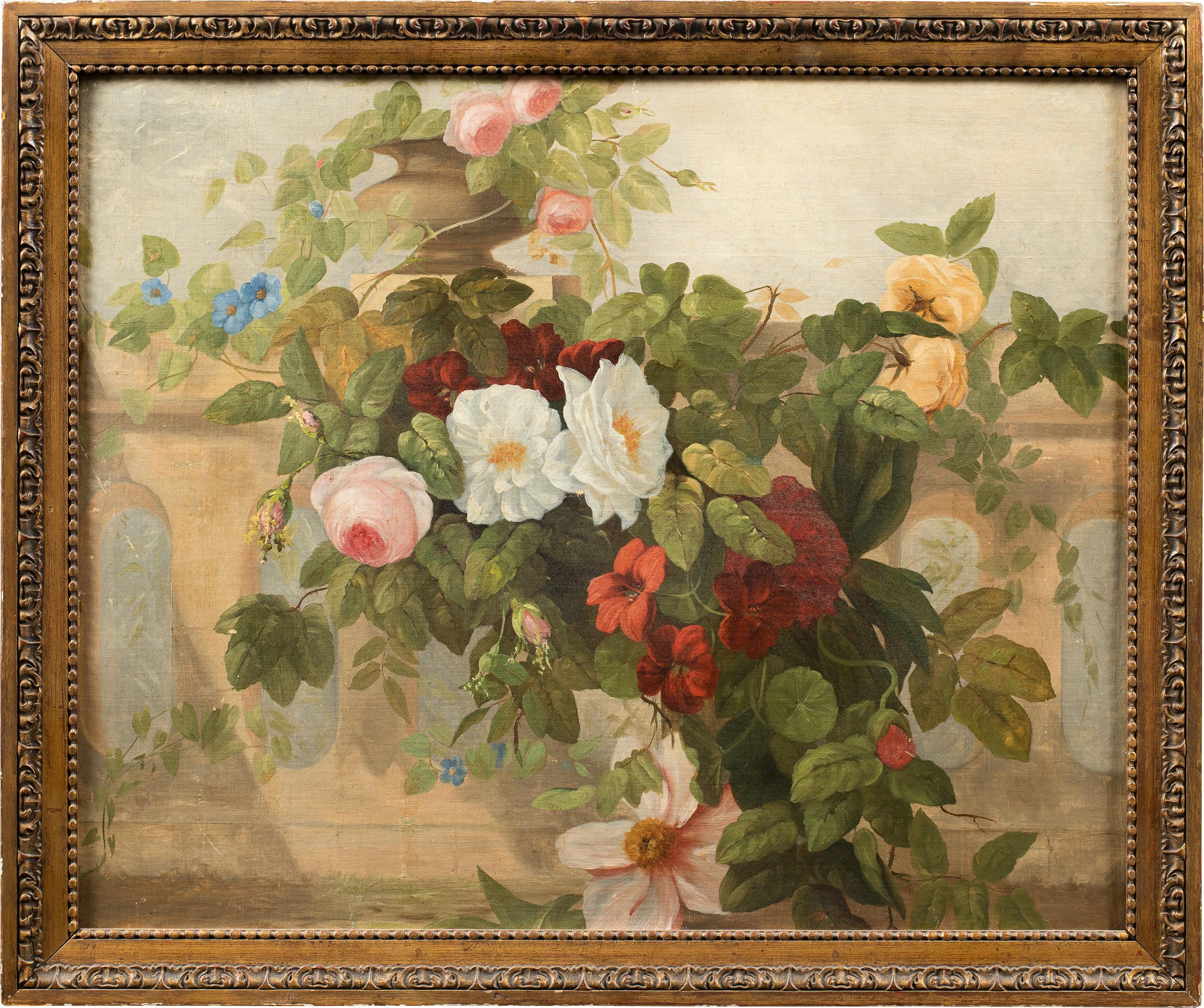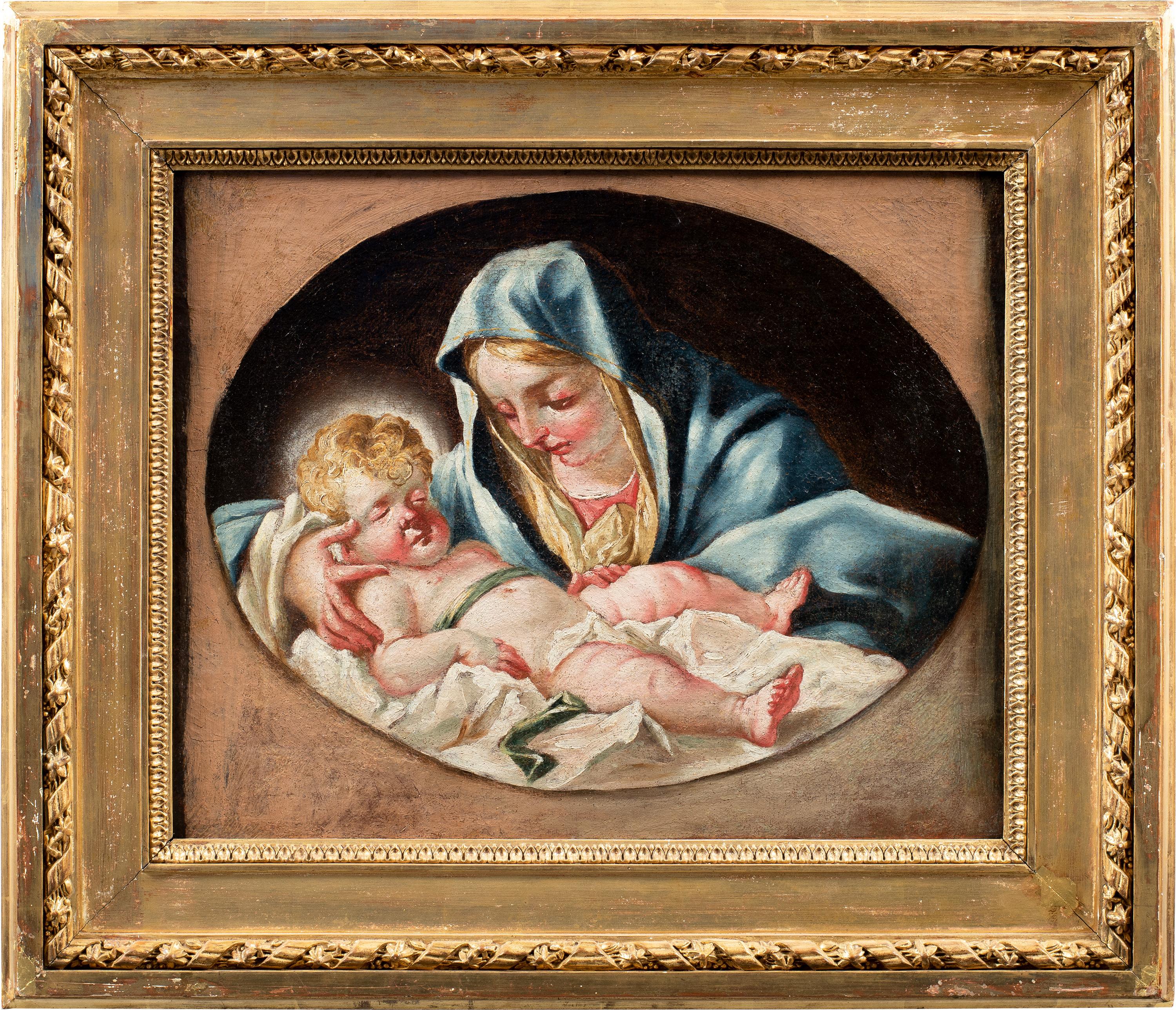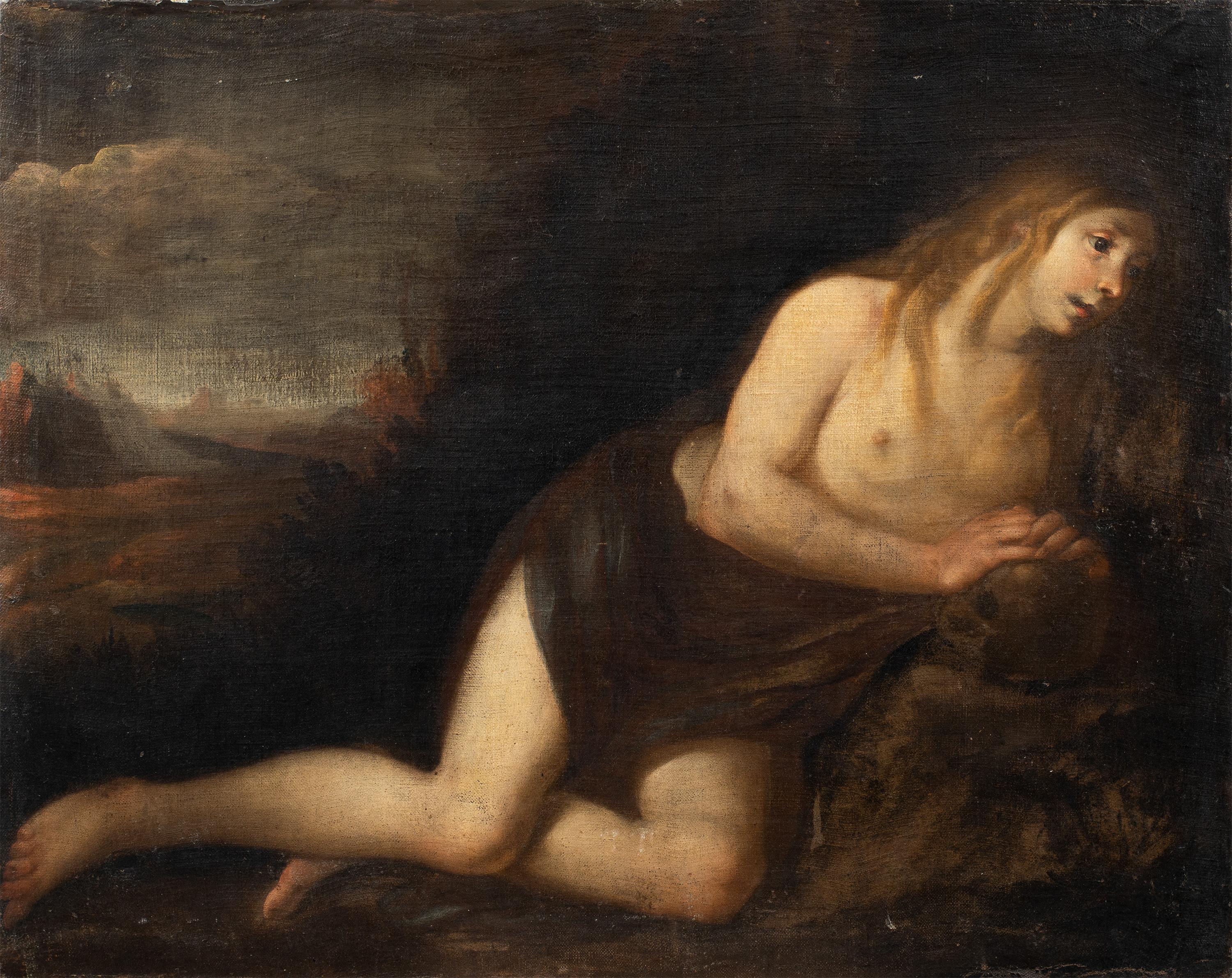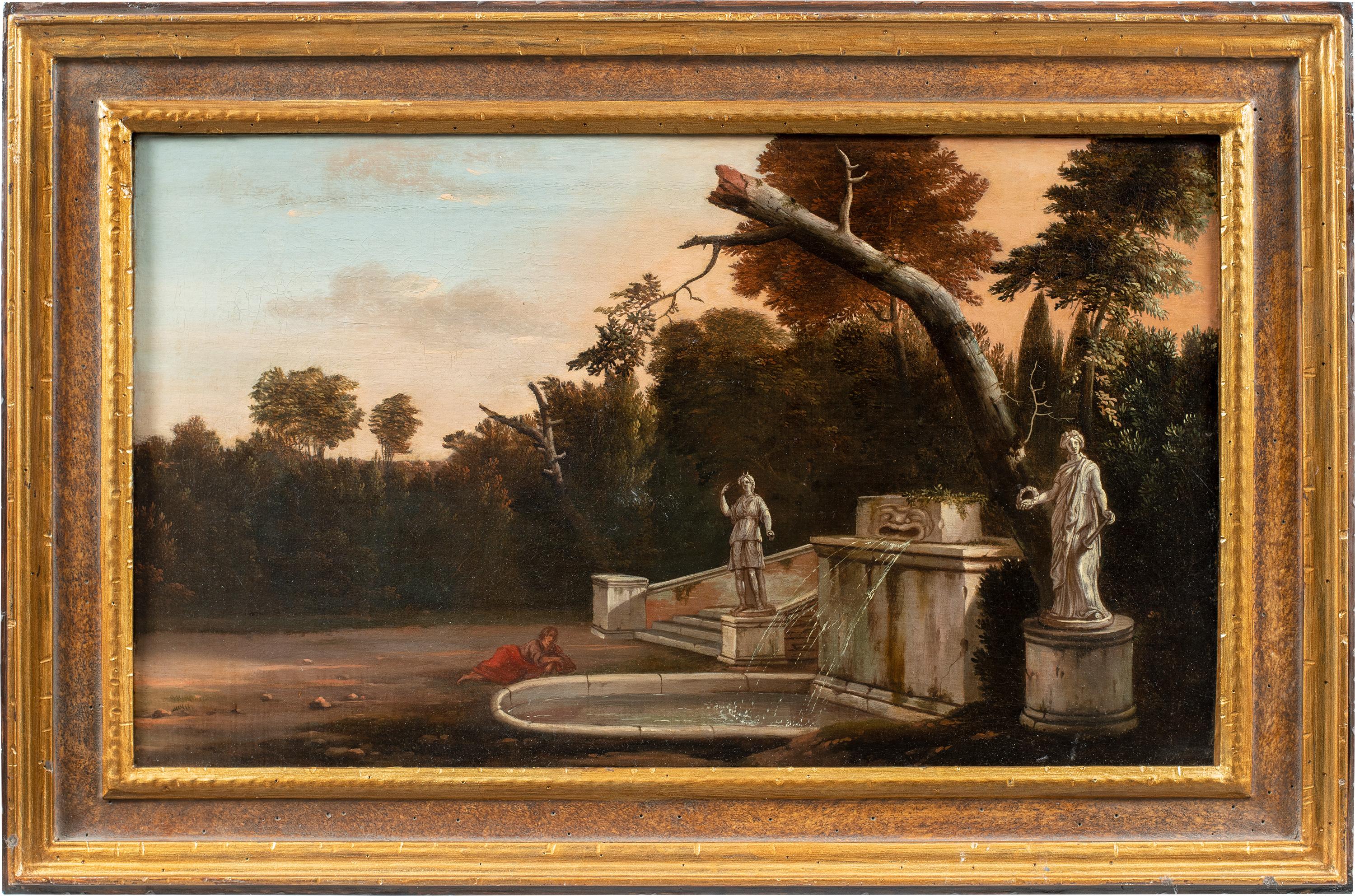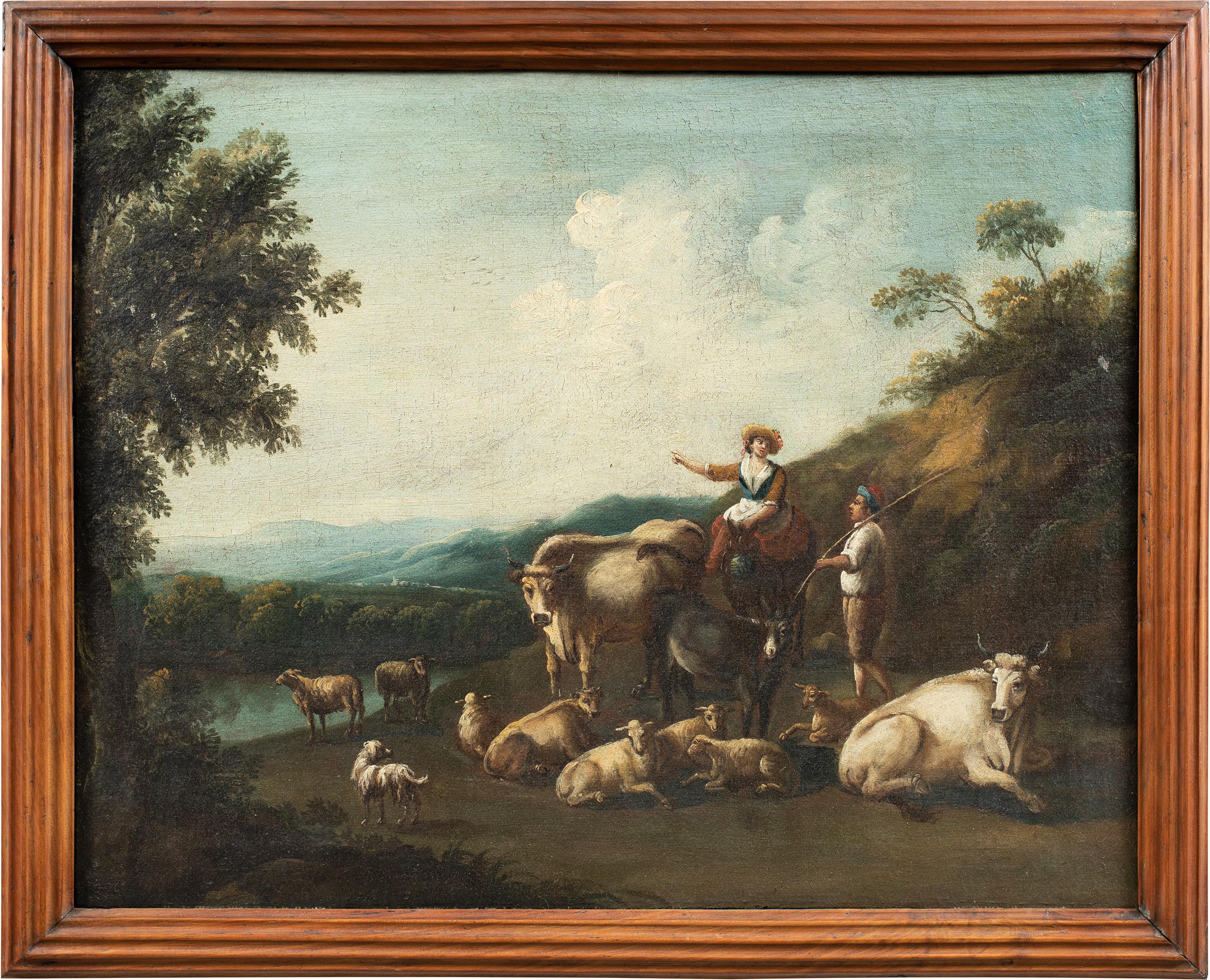Items Similar to La Route by Maurice de Vlaminck - Landscape painting
Want more images or videos?
Request additional images or videos from the seller
1 of 9
Maurice de VlaminckLa Route by Maurice de Vlaminck - Landscape painting
About the Item
*PLEASE NOTE UK BUYERS WILL ONLY PAY 5% VAT ON THIS PURCHASE.
La Route by Maurice de Vlaminck (1876-1958)
Oil on canvas
64.8 x 81 cm (25 ¹/₂ x 31 ⁷/₈ inches)
Signed lower left, Vlaminck
This work is accompanied by a letter from the Wildenstein Institute dated 21st March 2005 stating that it will be included in the forthcoming Catalogue Raisonné de l'oeuvre de Maurice de Vlaminck being prepared the Wildenstein Institute.
Provenance: Christie's, New York, 2005
Private collection, USA, acquired from the above
Christie's, New York, 2013
Stern Pissarro Gallery, London, acquired from the above
Private collection, UK, acquired from the above
Artist biography:
Born in Paris to a French mother, his father was a Flemish violin teacher who encouraged his teenage son to study with the painter Henri Rigalon. A chance meeting on a train with André Derain at the age of twenty-three began a lifelong friendship and turned his attentions to painting as a career. Upon completion of national army service, in 1900 De Vlaminck rented a studio with Derain, writing “several mildly pornographic novels” which were illustrated by his friend. Spending much of the day painting in their studio, De Vlaminck earned his living by teaching and performing the violin in the evenings. Two of his ground breaking paintings Sur le zinc (At the Bar) and L'homme a la pipe (Man Smoking a Pipe) emerged during this pivotal period of experimentation with intense colour. Considered one of the principal figures of the French Fauvist movement (c1904-8) he exhibited at the controversial Salon d’Automne in 1905 at which the critic Louis Vauxcelles famously described the young painter and his friends as ‘fauves’ (wild beasts).
For the next few years Vlaminck lived in or near Chatou outside Paris (the inspiration for his painting Houses at Chatou), painting and exhibiting alongside Derain, Matisse, and other Fauvist painters. Vlaminck's compositions represent a deep familiarity with the work of the Impressionists who had painted in the same area nearly fifty years before. At this time his exuberant paint application and vibrant use of colour displayed the influence of Vincent van Gogh. After visiting a Van Gogh exhibition Vlaminck even declared he "loved Van Gogh that day more than my own father". Vlaminck’s painting Sur le zinc calls to mind the work of Henri Toulouse-Lautrec and his portrayals of prostitutes and solitary drinkers, but does not attempt to probe the sitter's psychology—a break with the century-old European tradition of individualised portraiture of modernist ennui. In Vlaminck’s landscape paintings, his approach was similar: ignoring detail so that the landscape expresses mood through violent colour and vigorous brushwork, as in Sous bois (1904). The following year, he began to experiment with "deconstruction," turning the physical world into dabs and streaks of colour that convey a sense of motion. His paintings Le Pont de Chatou (The Chatou Bridge), Les Ramasseurs de pommes de terre (The Potato Pickers), La Seine a Chatou (The River Seine at Chatou) and Le Verger (The Orchard) exemplify this trend.
From 1908 Vlaminck’s predominant influence appears to be that of Paul Cézanne, his palette becoming darker and almost monochromatic, punctuated by heavy strokes of contrasting white paint. In 1911 he travelled to London to spent time painting beside the River Thames as his Impressionist forebears had done so. A poet and prolific auto-biographer, in later life Vlaminck became resentful that Fauvism had been superseded by Cubism and famously blamed Picasso "for dragging French painting into a wretched dead end and state of confusion".
- Creator:Maurice de Vlaminck (1876-1958, French)
- Dimensions:Height: 25.52 in (64.8 cm)Width: 31.89 in (81 cm)
- Medium:
- Period:
- Condition:
- Gallery Location:London, GB
- Reference Number:1stDibs: LU261213641622
Maurice de Vlaminck
Maurice de Vlaminck was a French painter, best known as one of the spearheads of the Fauvism movement at the start of the 20th century. His reputation rests predominantly on his landscapes, though he also produced still lifes and portraits. Born in Paris in 1876, Vlaminck had relatively little artistic training and, as a young man, dreamt of becoming a professional cyclist. A chance encounter in 1900, however, when he was nearing the end of his national service in the army, proved fateful. It was with the budding artist, André Derain, whom he met when a train they were aboard derailed. The pair lived in the small town of Chatou, a few miles along the River Seine from Paris, and they chose to complete their homeward journey from the French capital that day on foot. They struck up a friendship, and before long were sharing a studio. Derain and Vlaminck would become, alongside Henri Matisse, the driving forces behind Fauvism, the first avant-garde art movement of the 20th century. Partly inspired by the recent innovations of Paul Gauguin and Vincent van Gogh, it was characterised by aggressive brushwork, simplified forms and intense non-naturalistic colours. Its name came from the reaction of a critic in 1905 who compared the artists to fauves (‘wild beasts’). Vlaminck enjoyed painting in primary colours, and is particularly associated with scenes set in and around Chatou. Standout examples include Restaurant de la Machine à Bougival (1905) (today found in the Musée d'Orsay) and The Seine at Chatou (1906) (found in the Metropolitan Museum of Art in New York). The poet Guillaume Apollinaire hailed Vlaminck as ‘the wildest of the Fauves’. In the years immediately before the outbreak of World War I, the artist’s style shifted. His palette grew slightly more sombre, and there was a greater emphasis on solidity and a landscape's underlying structure. This revealed the influence of Paul Cezanne — the subject of a ground-breaking, posthumous retrospective in Paris in 1907. Vlaminck worked in a munitions factory during the war. His paintings after it were much darker and more realistic than those with which he had made his name. He died in 1958, aged 82.
About the Seller
5.0
Recognized Seller
These prestigious sellers are industry leaders and represent the highest echelon for item quality and design.
Platinum Seller
These expertly vetted sellers are 1stDibs' most experienced sellers and are rated highest by our customers.
Established in 1964
1stDibs seller since 2015
95 sales on 1stDibs
Typical response time: 4 hours
Associations
Society Of London Art Dealers
- ShippingRetrieving quote...Ships From: London, United Kingdom
- Return PolicyA return for this item may be initiated within 7 days of delivery.
More From This SellerView All
- La Rivière Orne et le Pain de S by PAULÉMILE PISSARRO - Oil, Post-ImpressionistBy Paul Emile PissarroLocated in London, GB*UK BUYERS WILL PAY AN ADDITIONAL 20% VAT ON TOP OF THE ABOVE PRICE La Rivière Orne et le Pain de Sucre by PAULÉMILE PISSARRO (1884-1972) Oil on canvas 54 x 65 cm (21 ¼ x 25 ⅝ inch...Category
1940s Post-Impressionist Landscape Paintings
MaterialsCanvas, Oil
- Petit Saint-Véran et Boîte de Sel by Hugues Pissarro dit Pomié - Still LifeBy Hughes Claude PissarroLocated in London, GB*UK BUYERS WILL PAY AN ADDITIONAL 20% VAT ON TOP OF THE ABOVE PRICE Petit Saint-Véran et Boîte de Sel by Hugues Pissarro dit Pomié (b. 1935) Oil on canvas 92 x 73 cm (36 ¼ x 28 ¾ in...Category
Early 2000s Contemporary Still-life Paintings
MaterialsCanvas, Oil
- Tiger Surprises Black Buck by Orovida Pissarro - Animal paintingBy Orovida PissarroLocated in London, GB*UK BUYERS WILL PAY AN ADDITIONAL 20% VAT ON TOP OF THE ABOVE PRICE Tiger Surprises Black Buck by Orovida Pissarro (1893-1968) Oil on canvas 127 x 101.5 cm (50 x 40 inches) Signed and dated lower left Orovida 1960 Provenance The Leicester Galleries, London, circa 1965 Literature K L Erickson, Orovida Pissarro: Painter and Print-Maker with A Catalogue Raisonné of Paintings, (doctoral thesis), Oxford, 1992, Appendices, no. 195 (illustrated) Exhibition London, Royal Society of British Artists, 3rd-25th November 1960, no. 82 (possibly; titled Tiger Entangled) London, Royal Academy, 1961, no. 534 Colchester, The Minories, 3rd- 24th March 1962 London, The Leicester Galleries, 1965, no. 37 Artist biography Orovida Camille Pissarro, Lucien and Esther Pissarro’s only child, was the first woman in the Pissarro family as well as the first of her generation to become an artist. Born in Epping, England in 1893, she lived and worked predominantly in London where she became a prominent member of several British arts clubs and societies. She first learned to paint in the Impressionist style of her father, but after a brief period of formal study with Walter Sickert in 1913 she renounced formal art schooling. Throughout her career, Orovida always remained outside of any mainstream British art movements. Much to Lucien's disappointment she soon turned away from naturalistic painting and developed her own unusual style combining elements of Japanese, Chinese, Persian and Indian art. Her rejection of Impressionism, which for the Pissarro family had become a way of life, together with the simultaneous decision to drop her famous last name and simply use Orovida as a ‘nom de peintre’, reflected a deep desire for independence and distance from the weight of the family legacy. Orovida's most distinctive and notable works were produced from the period of 1919 to 1939 using her own homemade egg tempera applied in thin, delicate washes to silk, linen or paper and sometimes embellished with brocade borders. These elegant and richly decorative works generally depict Eastern, Asian and African subjects, such as Mongolian horse...Category
1960s Modern Animal Paintings
MaterialsCanvas, Oil
- Animal painting by Orovida Camille Pissarro titled 'Exercising Ponies'By Orovida PissarroLocated in London, GB*UK BUYERS WILL PAY AN ADDITIONAL 20% VAT ON TOP OF THE ABOVE PRICE Exercising Ponies by Orovida Camille Pissarro (1893-1968) Oil on board 101.5 x 76 cm (40 x 30 inches) Signed and dated lower right Orovida 1954 Provenance Estate of Orovida Pissarro With John Bensusan-Butt, cousin of the artist Sotheby's London, 12th October 1988 G Hassell, 25th November 1988 With John Noott, 10th June 1992 Literature K L Erickson, Orovida Pissarro: Painter and Print-Maker with A Catalogue Raisonné of Paintings, (doctoral thesis), Oxford, 1992, Appendices, no. 161 (illustrated) Exhibitions London, Bowmore Gallery, Women in Art 1850-1989, 2nd-11th November 1989 Fort Lauderdale, Museum of Art, Camille Pissarro and his Descendants, January-April 2000, no.123 This work was included in the above important museum exhibition and a catalogue of the Fort Lauderdale museum show will be included with this painting. Biography Orovida Camille Pissarro, the only child of Lucien and Esther Pissarro, was the first woman in the Pissarro family to become a professional artist and the first Pissarro of her generation to take up painting. Born in Epping, England, in 1893, she lived and worked predominantly in London, where she was a prominent member of several British arts clubs and societies. She first learned to paint in the Impressionist style from her father and, after a brief period of formal study with Walter Sickert in 1913, she renounced formal art schooling. Throughout her career, Orovida always remained outside mainstream British art movements. Much to Lucien's disappointment, she soon turned away from naturalistic painting and developed an unusual style that combined elements of Japanese, Chinese, Persian and Indian art. Her rejection of Impressionism, which, for the Pissarro family, was a way of life, and her simultaneous decision to drop her famous last name and use simply Orovida as a nom de peintre, reflected a desire for independence and distance from the family legacy, of which she nevertheless remained proud. Orovida's most distinctive works are her paintings from the 1920s...Category
1950s Modern Animal Paintings
MaterialsOil, Canvas
- Nu au canapé bleu y Ludovic-Rodo Pissarro - Nude paintingBy Ludovic-Rodo PissarroLocated in London, GB*UK BUYERS WILL PAY AN ADDITIONAL 20% VAT ON TOP OF THE ABOVE PRICE Nu au canapé bleu y Ludovic-Rodo Pissarro (1878-1952) Oil on canvas 46 x 38 cm (18 ¹/₈ x 15 inches) Signed lower left, Ludovic Rodo Executed circa 1910 This work is accompanied by a certificate of authenticity from Lélia Pissarro. Provenance: Private collection, France Artist biography: Ludovic-Rodolphe Pissarro, born in Paris in 1878, was Camille Pissarro’s fourth son. Encouraged by his father...Category
1910s Post-Impressionist Figurative Paintings
MaterialsCanvas, Oil
- Chemin de la Vallée, Oil on Canvas by Paulémile PissarroLocated in London, GBChemin de la Vallée by Paulémile Pissarro (1884 - 1972) Oil on canvas 46 x 61 cm (18 ¹/₈ x 24 inches) Signed lower left, Paulémile. Pissarro- Signed and titled on the reverse Pro...Category
Mid-20th Century Post-Impressionist Landscape Paintings
MaterialsOil, Canvas
You May Also Like
- Baroque Italian painter - 17th century figure painting - Virgin ChildLocated in Varmo, ITMaître italien (XVIIe siècle) - Madone des Douleurs avec couronne d'épines. 99 x 74 cm sans cadre, 107 x 83 cm avec cadre. Peinture ancienne à l'huile sur toile, dans un cadre en b...Category
Late 17th Century Baroque Figurative Paintings
MaterialsCanvas, Oil
- Naturalistic Italian painter - 19/20th still life painting - FlowersLocated in Varmo, ITItalian painter (19th-20th century) - Still life of flowers. 65 x 79 cm without frame, 73.5 x 88.5 cm with frame. Antique oil painting on canvas, in a gilded wooden frame (wooden p...Category
Late 19th Century Naturalistic Figurative Paintings
MaterialsCanvas, Oil
- Rococò Venetian painter - 18th century figure painting - Virgin child - ItalyLocated in Varmo, ITVenetian painter (18th century) - Madonna with Child. 37.5 x 45.5 cm without frame, 55 x 63 cm with frame. Antique oil painting on canvas, in a carved wooden frame. Condition repo...Category
Early 18th Century Rococo Figurative Paintings
MaterialsCanvas, Oil
- Baroque Italian painter - 17th century figure painting - Mary MagdaleneLocated in Varmo, ITCircle of Bernhard Keilhau, known as Monsù Bernardo (Helsingør 1624 - Rome 1687) - Maddalena. 64 x 79.5 cm without frame, 82 x 98 cm with frame. Antique oil painting on canvas, in ...Category
Late 17th Century Old Masters Figurative Paintings
MaterialsCanvas, Oil
- Jan Blom (Baroque master) - 17th century Dutch landscape painting - Villa gardenLocated in Varmo, ITJan Blom (Amsterdam 1622 - Amsterdam 1685) - Villa garden with fountain. 41 x 69 cm without frame, 56 x 84 cm with frame. Antique oil painting on canvas, in a carved wooden frame. ...Category
Mid-17th Century Baroque Landscape Paintings
MaterialsCanvas, Oil
- Baroque Italian painter - 18th century landscape painter - ShepardsLocated in Varmo, ITItalian painter (18th century) - Arcadian landscape with flock and shepherds. 56 x 70 cm without frame, 63.5 x 79 cm with frame. Antique oil painting on canvas, in a wooden frame. ...Category
Early 18th Century Rococo Landscape Paintings
MaterialsCanvas, Oil
Recently Viewed
View AllMore Ways To Browse
Paintings For Kids
Ethereal Surreal Painting
Laughing Oil Painting
Joseph Jones
Hay Ray
Kenton Nelson Art
19th Century English Marinescapes
Painting Like A Photo
Au Jour Le Jour
Red Demon And Blue Demon
Venetian School Oil Painting
Kostabi Signed
Dutch Resistance
Orthodox Portrait
San Marks Mirror
Finch And Co
Sara Carter
Nicolaes Molenaer

